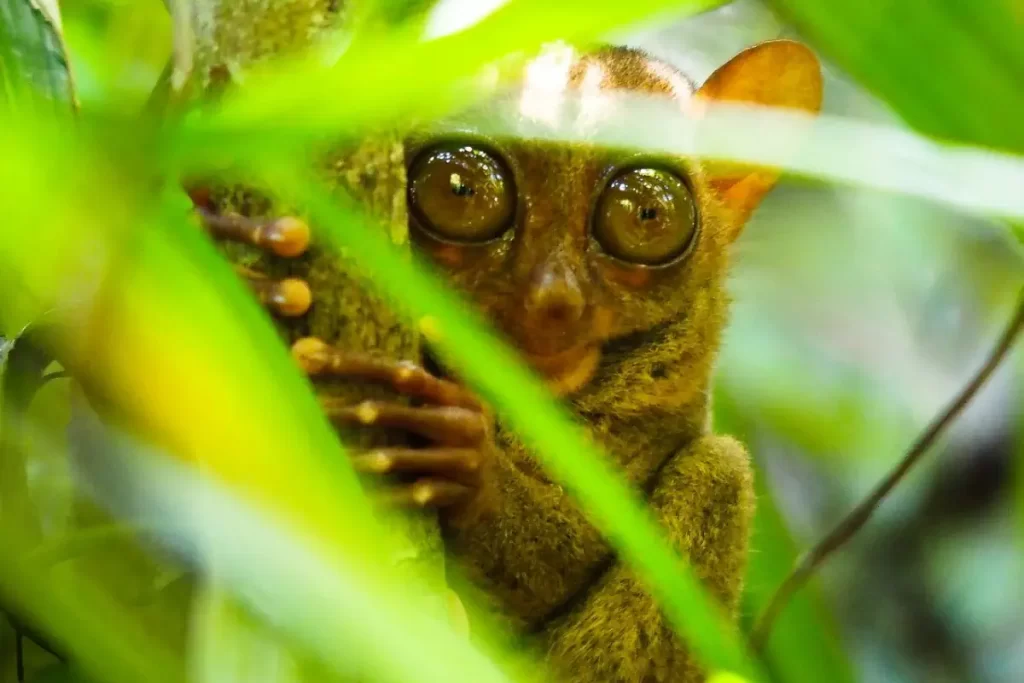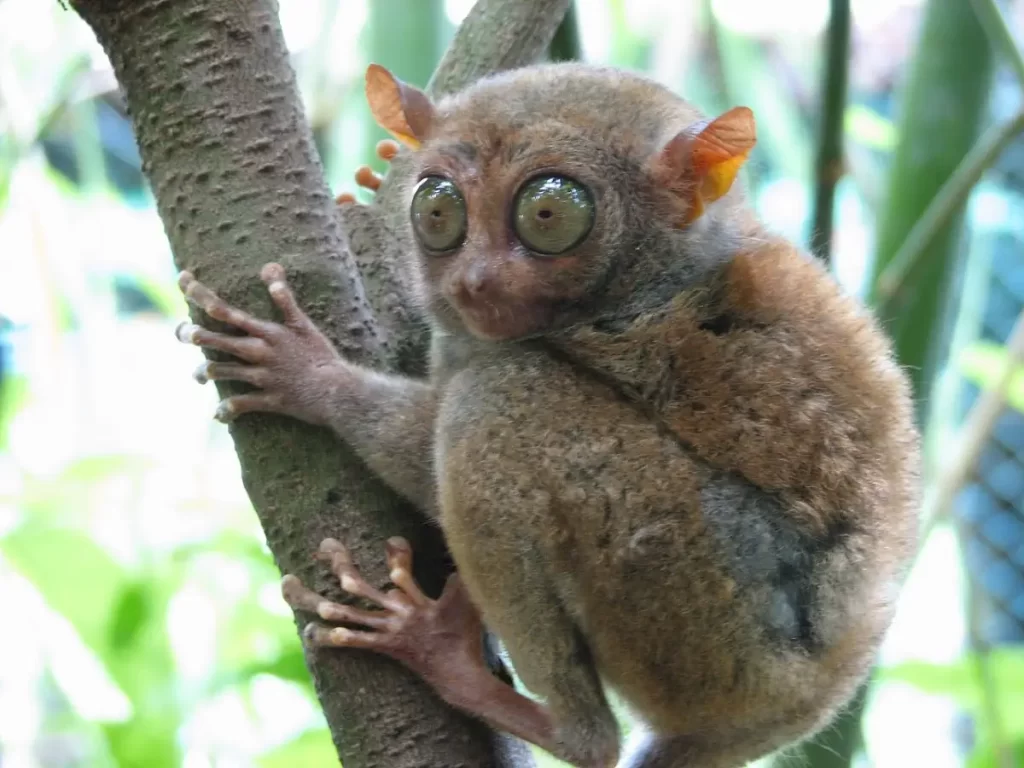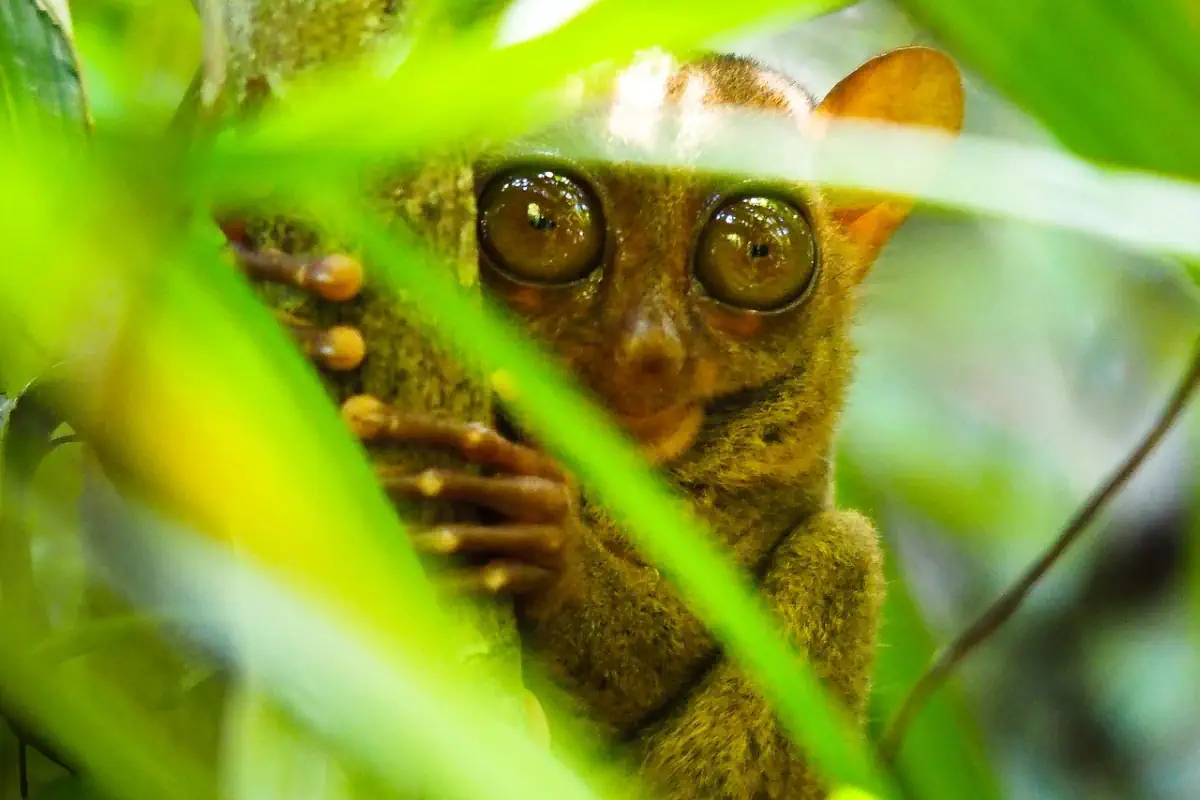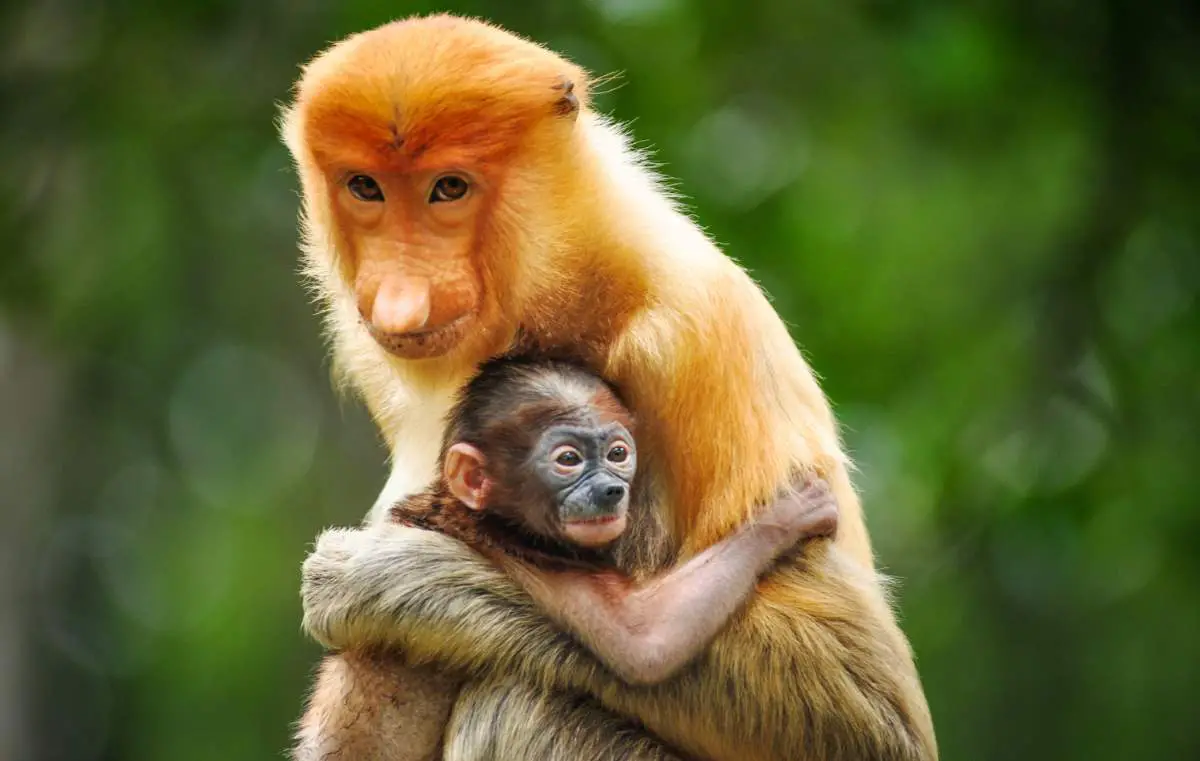Tarsiers are small (and very cute!) primates that live in the islands of Southeast Asia (especially the Philippines, Malaysia, Indonesia, and Brunei). They are the only living member of the family Tarsiidae. Here are 10 amazing tarsier facts.
1. Tarsiers are quite light and small
They weigh 80g- 165g (2.8 oz-5.8oz) and have a body length of 9 -16 cm (3-6 inches). Compared to their body, their tails are long – between 13-28 cm (5-11 inches).
2. They are hypercarnivores
Tarsiers are the only extant primates that are entirely carnivorous. They feed on small animals and insects such as butterflies, spiders, bats, birds, frogs, and snakes.
3. Only one cub is born at each birth
Tertiary pregnancy lasts between 180-190 days. Only one cub is born at each birth. Therefore, their population is not large.
Cubs are born with fur and their eyes open. In the first weeks, the mother tertiary carries her baby in her mouth. It hides its cub in a branch in search of food.
Tertiary mothers who do not leave their baby alone for a long time come back in a short time.
Breastfeeding ends after 80 days Cubs reach adulthood at the end of 2 years.
4. They have huge eyes (compared to their body)

Their eyes, which are quite large for their body size, and are relatively much larger than those of other mammals.
Each eyeball is about 16 millimeters in diameter, which is about the same size as the complete brain of a tarsier.
And it is this structure of their eyes that has the greatest effect on their good night vision.
5. They have a flexible structure
Tarsiers have long hind legs that allow them to easily jump distances of up to five meters.
This is evident from their ability to jump very well and climb trees very fast.
And they have a unique spine that makes it possible to turn their heads almost 360 degrees, so they can easily see behind them without turning their entire body.
6. Their lifespan varies by species
Philippine Tarsiers are thought to reach around 20 years old, where the Western and Eastern Tarsiers can be 15 years and 12 years respectively.
7. They perform duets
Tertiaries communicate through vocalization and scent marking.
The vocalizations include high-pitched whistles and different melodies called duets.
High-pitched whistles range from simple calls to predator alerts. Some tarsiers have distinctive sounds that they use to keep predators away.
Duets are sounds used in mating rituals between males and females.
The scent mark applied to trees is used to attract mates and to warn rivals by marking territories.

8. There are four Tertiary fossil species known
The samples were obtained from the middle Eocene (47.8-38 million years ago – mya) of China, the middle Miocene (15-11 mya) of Thailand, the Oligocene (34-23 mya) of Egypt, the Eocene of Myanmar.
Considering all the findings, they are considered to be of 3 different types. It is also thought that many tertiary genera have yet to be discovered.
9. Tarsiers are very shy creatures
Tarsiers do not breed successfully in cage programs because most species are extremely shy and have very sensitive food needs.
Although this complicates the conservation programs within the zoo, there are tarsier communities in nature parks that reproduce successfully and do not reduce their population numbers.
10. They are not good in captivity
Tarsier captive breeding efforts are nearly impossible because of their unique habitat and prey requirements, and only approximately half of captive tarsiers survive.
Tarsiers who are stressed or in cramped enclosures are more likely to commit suicide.
Light, noise, people in living places, and being touched are all sources of stress.
Their only hope is habitat conservation.
Some not-so-amazing tarsier facts
Causes such as habitat loss and deforestation threaten tertiary habitats and generations. Today, many areas inhabited by tertiaries have been declared protected areas and it is forbidden to operate in these areas.
Almost all types of vulnerable tertiaries are considered “at-risk” and there are many international studies on their protection.
Sources
- Tarsier on Wikipedia
- Tarsier on the Encyclopedia Britannica website
- Sloth Facts: 10 Amazing things about these adorable mammals - August 12, 2022
- 10 Amazing Koala Facts - February 18, 2022
- 10 Amazing Humpback Whale Facts - December 22, 2021


